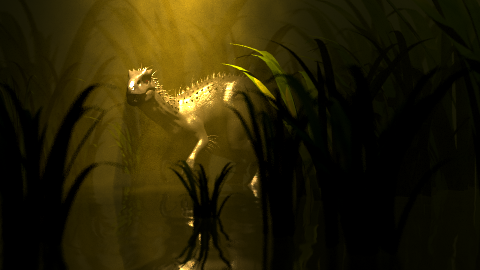Overview
This course provides the theoretical and practical foundations for computer graphics. It gives a wide overview of topics, techniques, and approaches used in various aspects of computer graphics with a focus on image synthesis and rendering, including texturing, shading, aliasing, sampling, and many more. After introducing the two basic algorithms for image synthesis, ray tracing and rasterization, it discusses the physical foundations of ray tracing in greater depth. As part of the practical exercises, the students incrementally build their own ray tracing system, which they will then use to generate a high-quality rendering for the end-of-term rendering competition.
Instructors
Teaching Assistants
Tutors
Pre-requisites
- Programming experience with C++
- Basic knowledge of linear algebra and analysis
Language
English
Registration
Register for the course via the LSF online system.
Mailing List
Information relevant to the course (such as updates, corrections, etc…) will be posted on the mailing list.
- Students registered for the course must sign up for the mailing list.
- Go on the webpage: https://mail.cg.uni-saarland.de/mailman/listinfo/cg1
- Provide your name and student e-mail address (it ends with stud.uni-saarland.de).
- Press the subscribe button.
- You will receive a message with a confirmation of the subscription.
In order to send a mail to the mailing list, use the following address: cg1 at cg.uni-saarland.de. You can ask or answer questions about the course or the assignments on this mailing list.
Assignments
The assignments will be posted under the course schedule. They include a mix of theoretical and programming exercises.
The paper copies for the theoretical parts of the assignments will be collected at the beginning of the lecture on the due date. The programming parts must instead be sent by email to your respective tutors. You can also send the scans of your paper copy by mail to your tutor if your are unable to attend the lecture.
The code submitted for the programming part of the assignments is required to reproduce the provided reference images, and the submission ought to include the mandatory generated images. The submission should also contain a creative image show-casing all extra-credit features that have been implemented.
The projects are expected to compile and work out of the box on the machines in the CIP-pool students’ lab in order to give the tutors a guaranty that the code will run on machines that both them and the students have access to.
Grading
- 10% Rendering Competition
- 20% Mid-term exam (minimum 40% to pass)
- 30% Assignments
- 40% Final exam (minimum 50% to pass)
Course Schedule
Rendering Competition
Rendering Competition is a final showcase of how the ray tracing engine that was developed throughout the course can be used to render interesting images.
The competition rules can be found here: pdf
Every submission will be graded based by its artistic merit.
Close
Literature
The course does not follow a particular book, but suggested readings include:
- Matt Pharr and Greg Humphreys, Physically Based Rendering, 3rd Edition, Morgan Kaufmann, 2016 (available online)
- Shirley et al., Realistic Ray Tracing, 2. Ed., AK. Peters, 2003
- Peter Shirley, Fundamentals of Computer Graphics, 4th Edition, AK Peters, 2015
- John Hughes et al., Computer Graphics: Principles and Practice, 3rd Edition, Addison-Wesley, 2013
- Andrew S. Glassner, An Introduction to Ray Tracing, 1st Edition, Morgan Kaufmann, 1989, is available online
Some articles on acceleration structures:
- On fast Construction of SAH-based Bounding Volume Hierarchies, Ingo Wald
- Two-Level Grids for Ray Tracing on GPUs, Javor Kalojanov, Markus Billeter, Philipp Slusallek
- GPU Ray-tracing using Irregular Grids, Arsène Pérard-Gayot, Javor Kalojanov, Philipp Slusallek
- Dynamic Ray Stream Traversal, Rasmus Barringer, Tomas Akenine Möller
- A nice blog entry by Josh Barczak
Possible Follow-Ups
SoPra, HiWi-Jobs, Diploma, Bachelor and Master’s Thesis



























